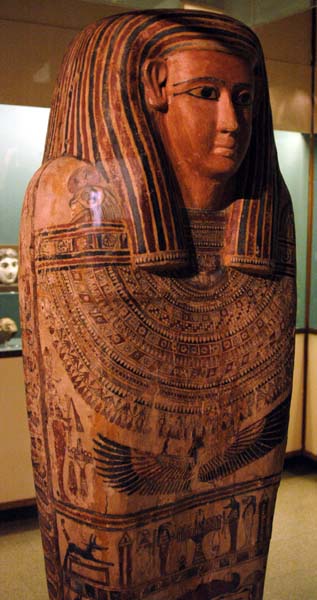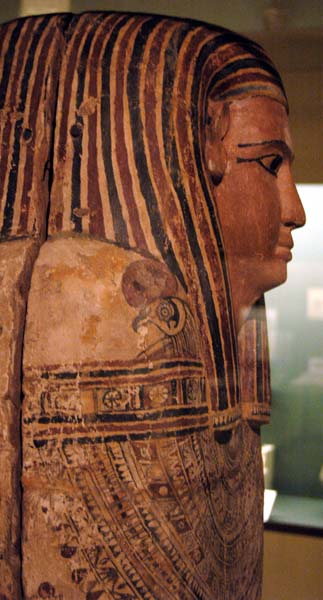
- Coffin of Lady Tadinanefer
This coffin dates to the Ptolemaic Period in which Egypt was ruled by a family of Macedonian descent called the Ptolemies. This family was descended from General Ptolemy, one of the military officers of Alexander the great. In 332 BC, Alexander conquered Egypt and after he died Ptolemy retained control of Egypt.
- The Ptolemies honoured Egyptian cultured, and styled themselves pharaohs. An enormous number of building Projects took place in Egypt as temples were renovated and new ones were built. The University in Alexandria became a centre of learning for the known world, and the Library of Alexandria kept a copy of every book that entered Egypt. The people of Egypt prospered as well, as this lady's coffin shows. More people had access to the expense of a proper burial.
Tadinanefer (whose name translates to 'She was given beauty') lived during the early Ptolemaic Period. She was a "Lady of the House", a term for the person who managed the house, and indicated that she was a married woman. On the back of her coffin, you can see Isis protecting her in the tomb. The net pattern you see on Isis' clothing was a bead overdress. in the front of the coffin, you can see scenes of the embalming and burial of Tadinanefer.
- Tadinanefer's face is shown as pink. In earlier periods of Egyptian history, women were shown with a yellow face, probably to imitate gold. which was associated with Hathor. the goddess of love. During the Ptolemaic Period, though, women and men were shown with pinkish skin. Throughout history, people have imitated their ruling class, and the Egyptians were trying to appear more Macedonian.
